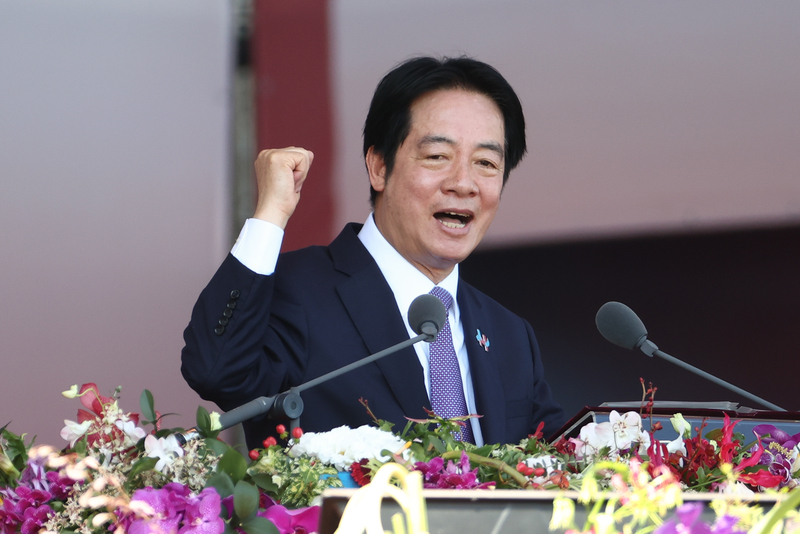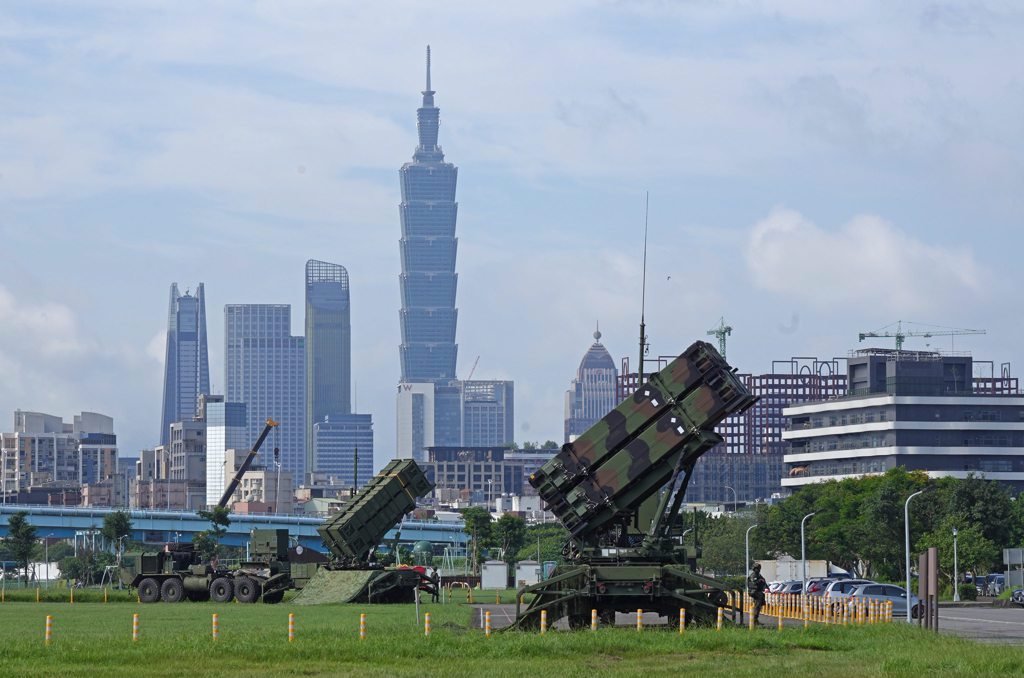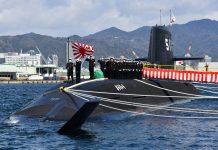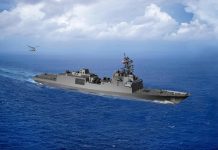After acquiring cutting-edge F-16 Viper fighter jets, state-of-the-art main battle tanks, and initiating drone production, Taiwan is developing a multi-layered air defense system to combat China’s expanding military aggression and repeated calls for “unification” of the self-ruled island state.
The multi-layered air defense initiative, known as T-Dome, was unveiled by Taiwan’s President Lai Ching-te on the country’s National Day on October 10.
He emphasized that the system is a “clear necessity to counter enemy threats” and to safeguard citizens’ lives and property amid Beijing’s refusal to renounce the use of force.
China claims the self-governing island as its sovereign territory and has intensified military activities in recent years. It has vowed to unite Taiwan with the Chinese mainland, with force if necessary.
In fact, Beijing has ramped up military pressure on Taiwan and held multiple large-scale exercises around the island, which are often described as preparations for a blockade or invasion.
Experts predict that an invasion could be launched by 2027.
Moreover, China’s “gray zone” activities near Taiwan have been steadily expanding. It includes frequent incursions by Chinese fighter jets into Taiwan’s air defense identification zone, large-scale military exercises as “punishment”, and the rapid expansion of China’s arsenal of advanced weapons like stealth fighters, aircraft carriers, and precision-guided missiles, as recently seen in the country’s Victory Day Parade.
Taiwan has been equipping its military with conventional and unconventional weapons to thwart a potential Chinese invasion, as reported by the EurAsian Times on several occasions.
It has upgraded its F-16s to Viper standards, ordered multiple advanced weapon systems like HIMARS and Abrams Tanks, launched a large-scale drone initiative, and acquired sophisticated UAVs like MQ-9 Reapers.
T-Dome appears to be the most significant part of Taiwan’s defense against China. Several advanced countries are working on multi-layered air defense networks, including the US, Israel, Germany, India, and others.
In fact, the multi-layered air defense networks of both Israel and India were recently put to the test in their wars with Iran and Pakistan, respectively.
President Lai also emphasised that Taiwan is committed to increasing defense spending and would provide a special budget for military expenditures by the end of the year.

“The increase in defence spending has a purpose; it is a clear necessity to counter enemy threats and a driving force for developing our defence industries,” he said. “We will accelerate our building of the T-Dome, establish a rigorous air defence system in Taiwan with multi-layered defence, high-level detection, and effective interception, and weave a safety net for Taiwan to protect the lives and property of citizens.”
Lai did not reveal any details about the so-called T-Dome. However, reporters were informed by a top presidential office official that the “T-Dome” spending plans would be part of the budget proposal presented by the end of the year.
“We are hoping to build a more thorough air defense net with a higher interception rate,” said the official.
Some analysts told Taiwanese media that the island state’s air defense has been its weakest link, which may have necessitated the development of T-Dome.
Professor Chen Shih-min of the Department of Political Science at National Taiwan University cautioned that the hypersonic missiles China displayed in its parade on September 3 underscore the need for improved defense. “T-Dome gives the public a psychological boost,” he continued.
The T-Dome aims to integrate high-level detection, effective interception, and layered defenses to create a “safety net” for the island. It will build on Taiwan’s existing defenses and perhaps try to achieve higher interception rates across a broader spectrum of threats, including drones, rockets, missiles, and fighter jets.
The announcement aligns with broader efforts to increase spending, a key demand made by the Trump administration for a long time.
Taiwan’s Air Defenses
Taiwan relies on a combination of imported and locally developed missile defense systems.
It operates the US-supplied Patriot Advanced Capability (PAC) systems, including PAC-2 and the more advanced PAC-3. The systems are designed to intercept tactical ballistic missiles, cruise missiles, and aircraft at high altitudes. It has a range of about 20–160 kilometers. The PAC-3 is optimized for point defense with hit-to-kill technology.
These systems form the backbone of Taiwan’s high-altitude air defense, protecting major cities like Taipei and critical military installations. Taiwan is also reportedly upgrading the system to enhance its capabilities.

The other most potent air defense system in Taiwan’s arsenal is the Sky Bow, or the Tien Kung surface-to-air missile systems.
There are various iterations of the Tien Kung.
The Tien Kung-1 can only engage aircraft targets and has a maximum range of 101 kilometres. However, it can be used on mobile trailer launchers and in vertical-launch silos at fixed locations.
Meanwhile, the Tien Kung-2 can engage cruise missiles and has a range about twice as long, but it can only be used in silos. Finally, the Tien Kung-3 is essentially an anti-ballistic missile (ABM) system, roughly comparable to the Terminal High Altitude Area Defense (THAAD) system manufactured in the United States, with a reported range of 125 miles, or 201 kilometres.
The Tien Kung series complements Patriot systems, providing a layered defense against medium- to long-range threats.

Last month, Taiwan officially rolled out a new anti-ballistic missile system called Chiang Kung, or Strong Bow. The system has the first active electronically-scanned array (AESA) radar made in the island and comes with a two-stage interceptor.
As per reports, Chiang Kung can “intercept enemy tactical ballistic missiles at mid-level.” The interceptor can reportedly engage targets at altitudes of at least 70 kilometers.
Taiwan also deploys a vehicle-mounted Joe Ling (Antelope) short-range air defense system equipped with Tien Chien (Sky Sword) I missiles for point defense and protection of military installations.
Additionally, it employs a special variant of the Skyguard air defense system that combines RIM-7 Sea Sparrow missiles with Oerlikon 35mm guns that fire Advanced Hit Efficiency and Destruction (AHEAD) ammunition.
In January 2025, Taiwan announced that its newly purchased, cutting-edge, battle-proven National Advanced Surface-to-Air Missile Systems (NASAMS) will be deployed in northern Taiwan to protect the capital, Taipei.
It will provide a critical layer of air defense coverage to the capital, the island state’s most protected bastion and home to the Presidential Office, as previously reported by the EurAsian Times.
The NASAMS is a critical point defense asset and is even used by the US to protect the sensitive airspace around the White House and the US Capitol in Washington.
The system can launch modern air defense missiles, such as the short-range AIM-9X Sidewinder missile, the long-range AMRAAM-ER, and the AIM-120 Medium-Range Air-to-Air Missile.
Taiwan also deploys mobile anti-aircraft units equipped with a mix of missiles, such as Stinger, to protect coastal areas and outlying islands like Kinmen, Matsu, and Penghu. These units are often integrated with mobile radar systems for flexibility and are meant to defend against low-altitude incursions and amphibious assault support aircraft.
Beyond the general drone defense systems mentioned previously, Taiwan is developing specialized counter-unmanned aerial systems (C-UAS).
These are tailored to counter small, low-cost drones used for reconnaissance or swarm attacks. It would neutralise drone threats that could overwhelm traditional missile-based defenses, protecting critical infrastructure and military assets.
The T-Dome initiative, announced on October 10, 2025, likely aims to integrate all these assets into a unified, multi-layered system with enhanced detection via advanced radars and artificial intelligence, interception across altitudes and threat types, and command and control using AI-driven analytics and data Link-16.
The National Day speech and the unveiling of T-Dome were condemned by China, with Chinese Foreign Ministry spokesperson Guo Jiakun saying that “seeking independence by force” would only drag Taiwan into conflict.
“He peddles the separatist fallacy of Taiwan independence. This once again exposes his stubborn nature as a troublemaker, creator of danger, and a war-maker.”
- Contact the author at sakshi.tiwari13 (at) outlook.com
- Follow EurAsian Times on Google News




